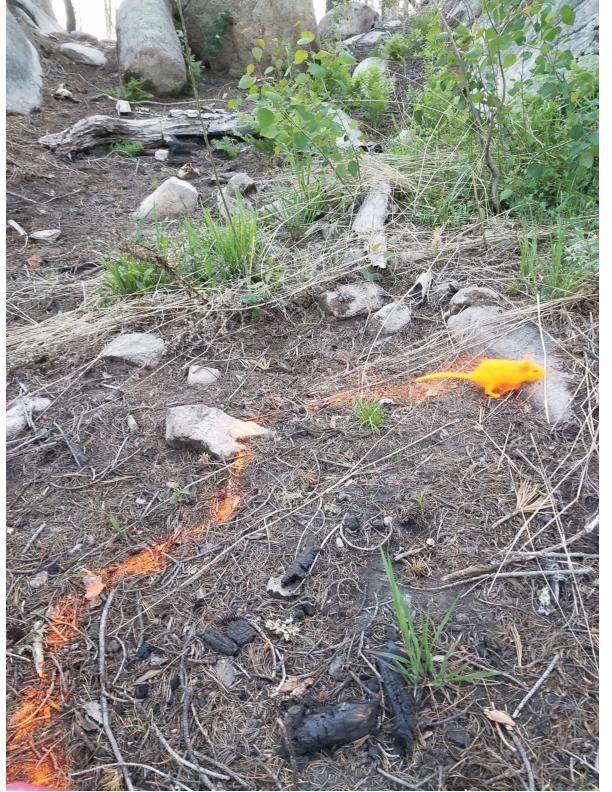When most people think of packrats, they likely can’t help but think of the animal responsible for chewing through their car cables, causing the engine light to turn on. However, when undergraduate researcher Sandy Slovikosky pictures the rodents, she thinks of something entirely different: animals glowing in vibrant pink, orange and yellow colors running across the landscape.
Slovikosky works within Dr. John Koprowski’s Conservation Research Laboratory studying the routes that packrats follow when they are moved away from their nests using a technique known as “fluorescent powder tracking.” She currently conducts this research on Mount Graham, the highest peak of Coronado National Forest’s Sky Islands and located in the Pinaleño Mountains.
“I call it creating glow-in-the-dark rats,” Slovikosky said. “In short, I capture the rodents, move them a short distance from their nests, place them in a plastic bag with the fluorescent powder, gently rotate to cover the fur in powder and then let them go.”
RELATED: OPINION: All students rights and freedoms must be protected
As the animals move across the landscape, they leave a trail behind that glows at night under an ultraviolet light, allowing her to know precisely which direction they went in.
By examining the packrats’ paths, Koprowski and Slovikosky hope to gain a stronger understanding of how these small mammals relate to their natural environment, including how they move over burned areas. Mount Graham had a severe fire in 2017, known as the Frye Fire, which burned over 48,000 acres.
The study sites on which the packrat nests are located are characterized by varying burn levels, ranging from unchanged to severe. Slovikosky notes the burn severity of the patches over which she moves the rodents.
“Understanding how fire and other natural phenomena affect rodents can help inform management decisions, particularly for endangered species,” she said. “While the packrat is not endangered, the knowledge gained from its movement patterns could potentially be utilized to help characterize the relationship between the natural environment and other small mammal species.”
Packrats, or woodrats as they are more frequently called within the scientific community, are relatively easy to locate based on the presence of their nests, or middens. These are characterized by a large accumulation of sticks, pine needles, rocks and virtually anything else the rat can find in addition to a bed of fecal pellets and a distinctive smell.
RELATED: OPINION: Transit needs to be reevaluated
The specific species Slovikosky studies is the Mexican woodrat.
Because the animals are nocturnal, she primarily works at night, opening traps at sundown and releasing and powdering any caught rodents prior to sunrise. After dark, she then uses pin flags to mark the trails and, during the day, analyzes those marked from the previous evening by noting number of turns and preferred vegetation type.
“It’s quite an adventure being out at night,” Slovikosky said. “Following the trails is always fun because you never know where they’re going to lead. Sometimes the animal runs in a relatively straight line and other times it’s all over the place.”
The project is an example of the variety of research the Koprowski lab conducts. The group focuses on the conservation of imperiled species from the Mount Graham red squirrel to Ganges River dolphins and African elephants.
While most people know the mountain for its astronomical International Observatory and refugium for the endangered Mount Graham red squirrel, the research that Slovikosky and others conduct lends testimony to the unique biodiversity on the mountain.
Koprowski and Slovikosky’s research is funded by the University of Arizona’s Undergraduate Biology Research Program and the College of Agriculture & Life Sciences.
Koprowski and Slovikosky’s research is funded by the University of Arizona’s Undergraduate Biology Research Program and the College of Agriculture & Life Sciences.









